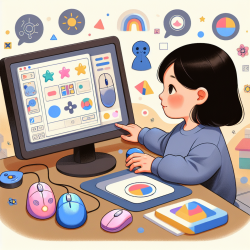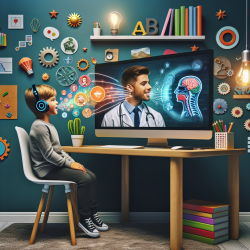As a practitioner dedicated to enhancing the lives of children through innovative therapy solutions, understanding the latest research is crucial. The study titled Evaluation of Child–Computer Interaction Using Fitts’ Law: A Comparison between a Standard Computer Mouse and a Head Mouse offers valuable insights that can significantly improve your practice. This blog aims to distill the findings and suggest practical applications for better child-computer interaction (CCI).
Understanding the Research
The study evaluates the motor performance and learning process of children using two different input devices: a standard computer mouse and the ENLAZA head mouse. The evaluation is based on Fitts' Law, which quantifies the trade-off between speed and accuracy in reaching tasks. Ten children aged between 6 and 8 participated in the study, performing pre- and post-training tests for both devices.
Key Findings
- Fitts' Law can effectively measure motor performance and learning progress in children.
- Significant differences exist between fine motor control (hand) and gross motor control (head).
- Training improves throughput (TP) for both input devices, with more noticeable improvements for the head mouse.
- Error rates decrease with training, but the head mouse still shows higher error rates compared to the standard mouse.
Practical Applications
Here are some ways to implement these findings in your practice:
- Customized Training Programs: Design training programs that focus on improving fine and gross motor skills, leveraging the sensitivity of Fitts' Law metrics to track progress.
- Device Selection: Use the ENLAZA head mouse for children who struggle with fine motor skills, and a standard mouse for those who can handle finer movements. Tailor the choice of device to the individual needs of each child.
- Monitor Progress: Regularly assess motor performance using Fitts' Law metrics to adjust therapy plans as needed.
- Error Rate Management: Adjust task difficulty (target size and distance) to maintain an optimal error rate, promoting gradual skill development.
Encouraging Further Research
While the study provides a solid foundation, further research is needed to explore:
- Long-term effects of training on motor performance.
- Impact of different age groups and developmental stages on CCI.
- Effectiveness of other alternative input devices in various therapeutic settings.
To read the original research paper, please follow this link: Evaluation of Child–Computer Interaction Using Fitts’ Law: A Comparison between a Standard Computer Mouse and a Head Mouse.










